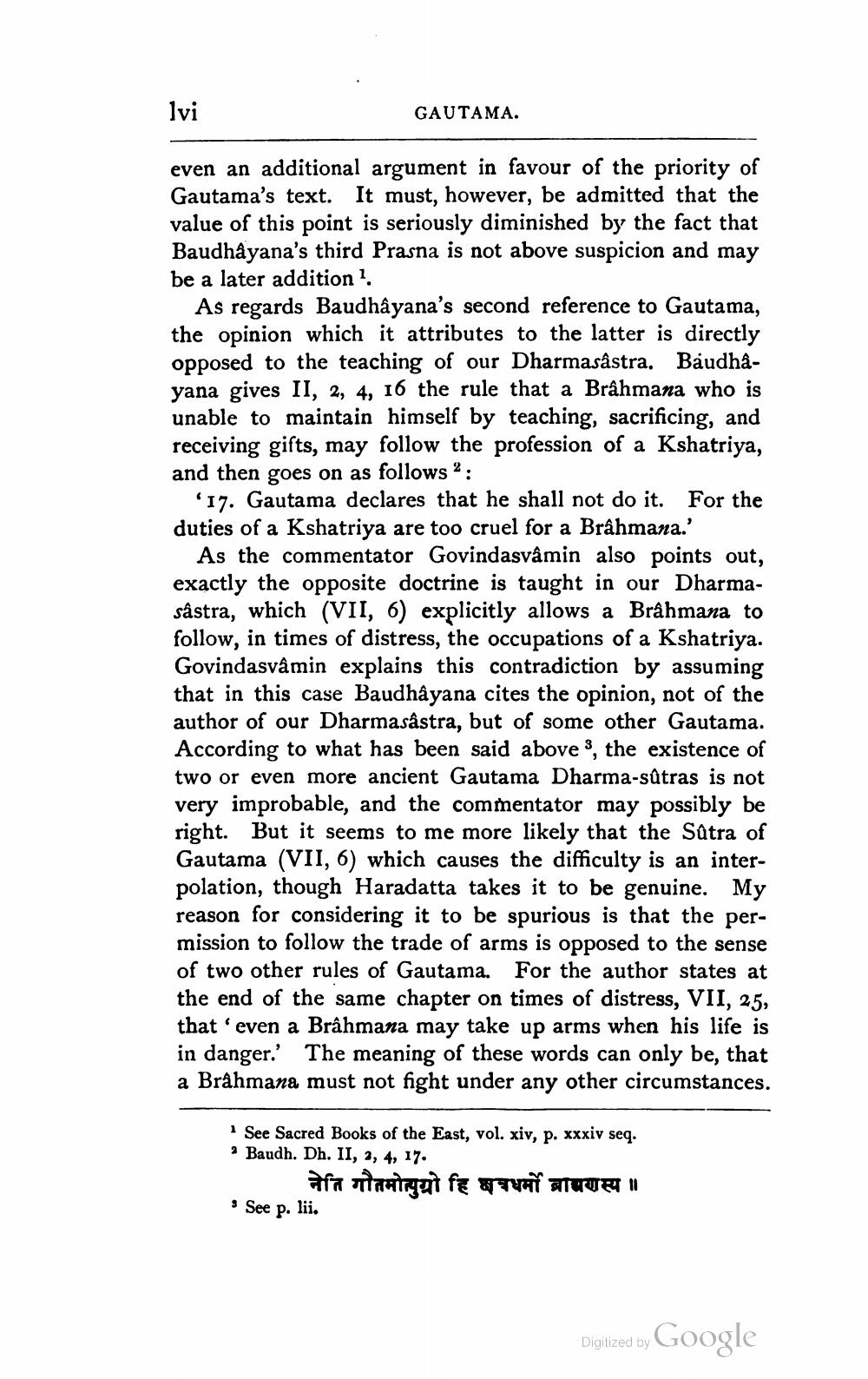________________
lvi
GAUTAMA.
even an additional argument in favour of the priority of Gautama's text. It must, however, be admitted that the value of this point is seriously diminished by the fact that Baudhảyana's third Prasna is not above suspicion and may be a later addition 1.
As regards Baudhầyana's second reference to Gautama, the opinion which it attributes to the latter is directly opposed to the teaching of our Dharmasastra. Baudhayana gives II, 2, 4, 16 the rule that a Brâhmana who is unable to maintain himself by teaching, sacrificing, and receiving gifts, may follow the profession of a Kshatriya, and then goes on as follows:
'17. Gautama declares that he shall not do it. For the duties of a Kshatriya are too cruel for a Brahmana.'
As the commentator Govindasvâmin also points out, exactly the opposite doctrine is taught in our Dharmasastra, which (VII, 6) explicitly allows a Brâhmana to follow, in times of distress, the occupations of a Kshatriya. Govindasvâmin explains this contradiction by assuming that in this case Baudhayana cites the opinion, not of the author of our Dharmasastra, but of some other Gautama. According to what has been said above 3, the existence of two or even more ancient Gautama Dharma-sútras is not very improbable, and the commentator may possibly be right. But it seems to me more likely that the Sûtra of Gautama (VII, 6) which causes the difficulty is an interpolation, though Haradatta takes it to be genuine. My reason for considering it to be spurious is that the permission to follow the trade of arms is opposed to the sense of two other rules of Gautama. For the author states at the end of the same chapter on times of distress, VII, 25, that even a Brâhmana may take up arms when his life is in danger.' The meaning of these words can only be, that a Brahmana must not fight under any other circumstances.
See Sacred Books of the East, vol. xiv, p. xxxiv seq. · Baudh. Dh. II, 2, 4, 17.
नेति गौतमोत्युग्रो हि छत्रधर्मो ब्रामणस्य ॥ See p. lii.
Digitized by Google




